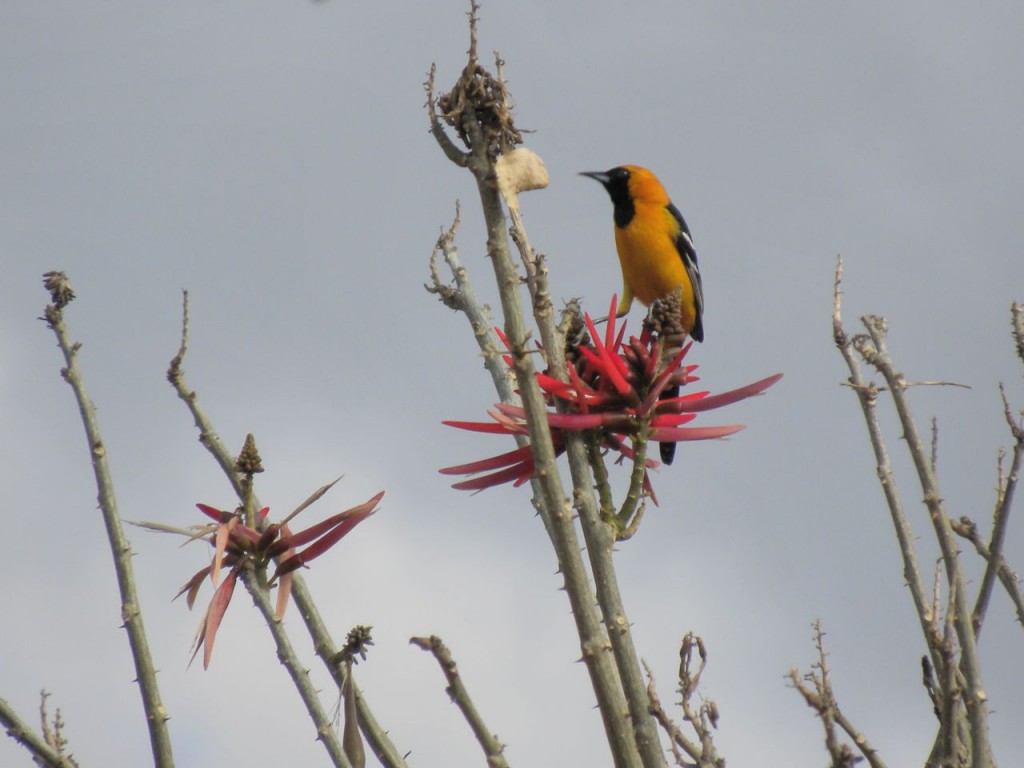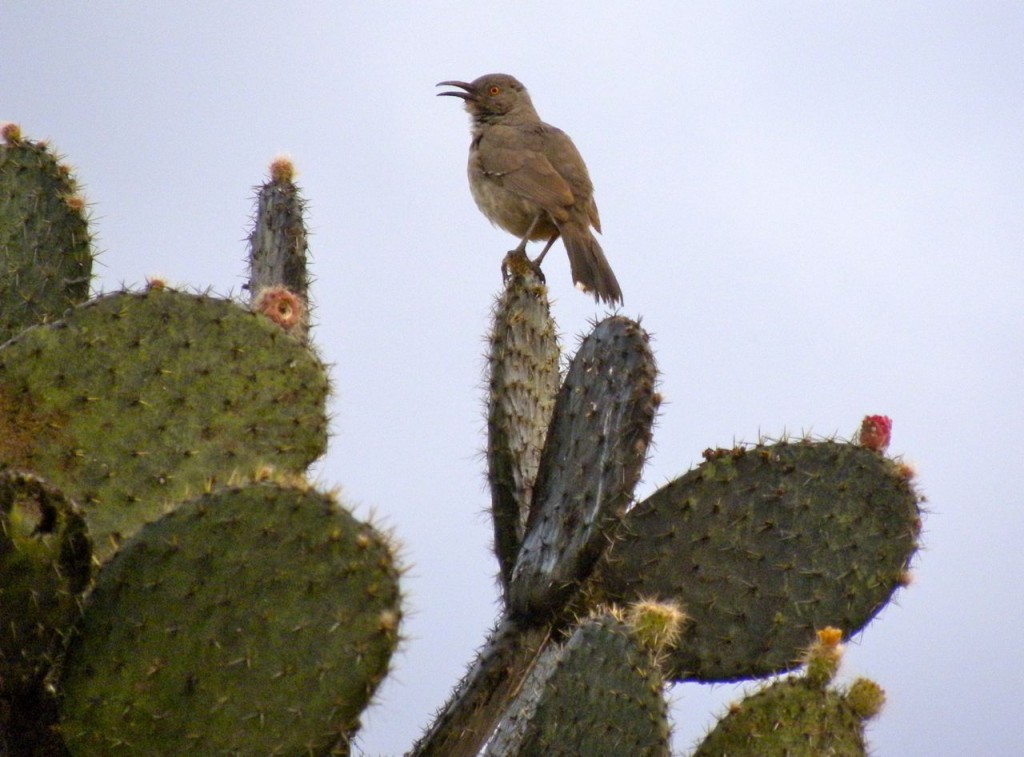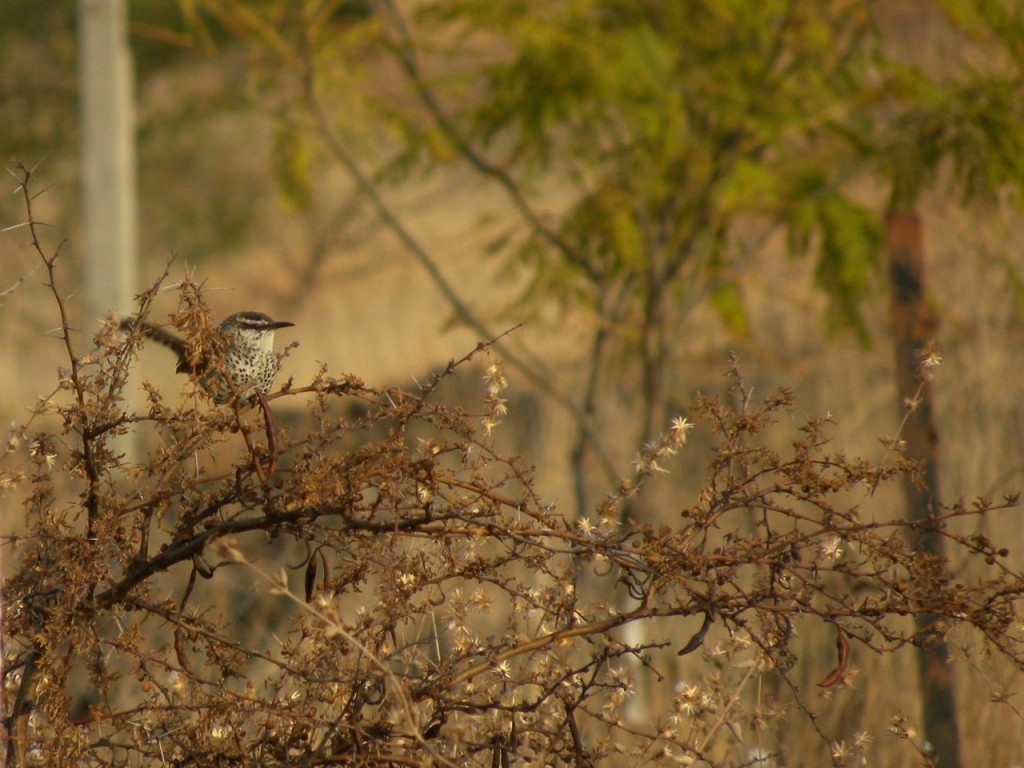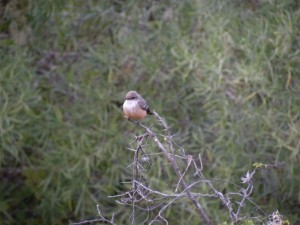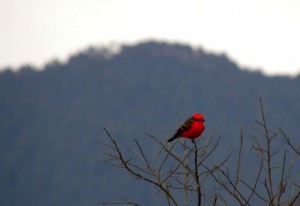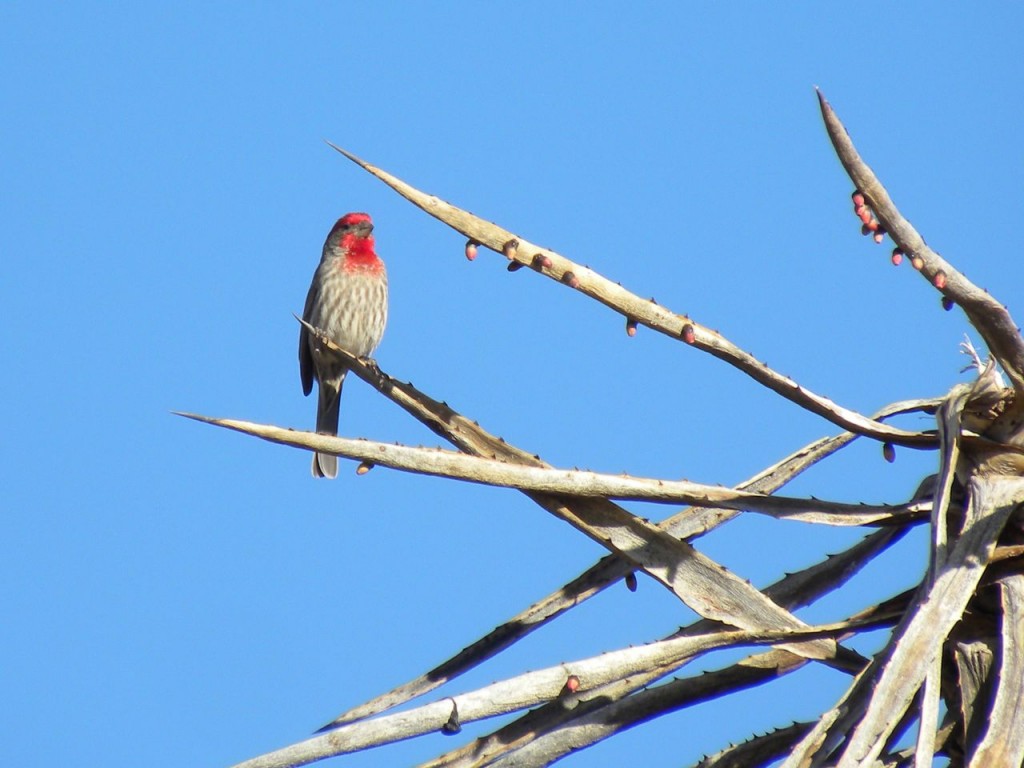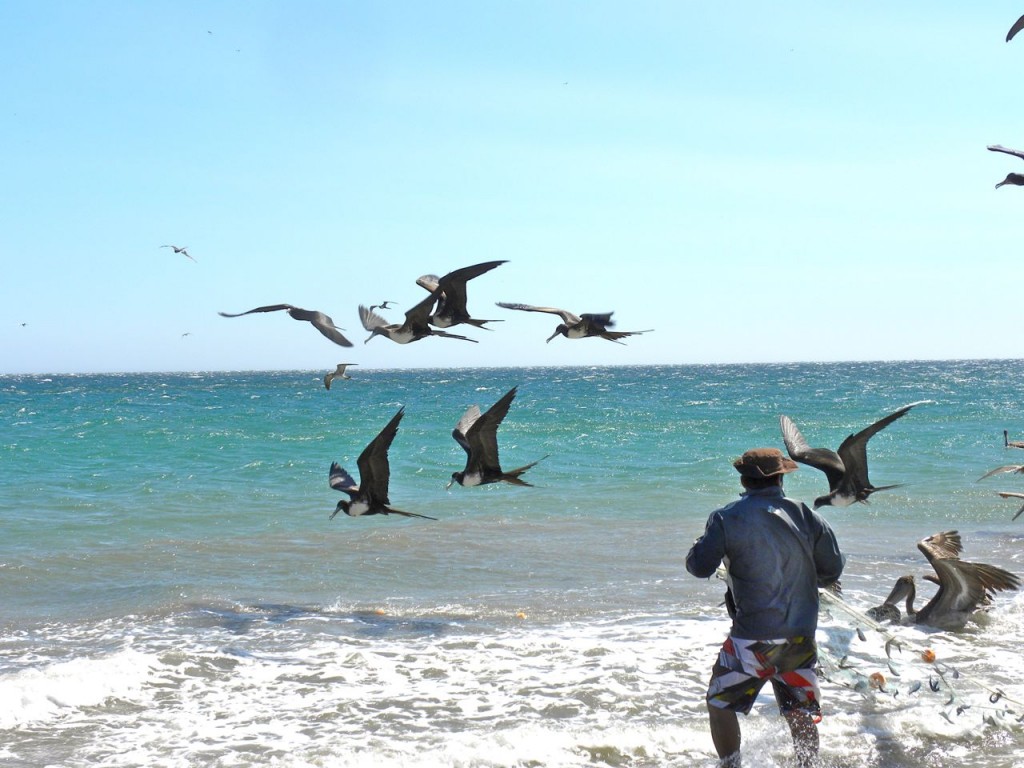24 January 2013. This morning, really early, we set out to sample the birds of the Sierra Norte, the high mountain range that flanks the eastern side of Oaxaca Valley. My companion was a local birder who had heard of my quest to squeeze little bits of birding into what is otherwise a more fabric-arts focussed holiday.
As we made our way to the summit on a really fine road we could see that there was an unusually strong wind tugging at the pines and oaks. And when we got out of the car at the top it was like a return to November birding in Ontario. I had been cautioned that it could be cold and to dress warmly, but neither of us expected it to be that cold. As a rule I’m philosophical about birding with watering eyes and stiffening fingers, it’s part of the price you pay for good birds and fresh air. But my Oaxacan companion was a little more thin-blooded and very happy to beat a retreat after a delicious cup of hot chocolate, which by the way is almost the national drink (apart from mescal, limonade and cervesa) and nothing like the powdered, packet stuff foisted on us northerners.
So we retraced our steps downhill and as the warming sun peered over the tree tops our knuckles softened up. Soon we were in full birding mode. “There’s a –.” “It just moved down”. and “Beautiful bird! out in the open now at about 9 o’clock.” Birder talk.
One of our first birds was a Ruddy Nightingale Thrush, a Catharus species and therefore a close relative of ‘our’ Wood Thrush and Hermit Thrush. Like its cousins, it’s rather shy and, as birds go, more soothing than exhilarating. Exhilaration came a little later though when a small oak tree in front of us suddenly filled with Hermit Warblers and Olive Warblers, we could hardly believe it. As my companion said it was like in the movies. One after another, in front, behind, up high, down low, all over the place; and then, flit they were gone. But in the trees around were a flock of Red Crossbills (really) a Greater Peewee and a Plumbeous Vireo; a feast of mostly new birds to me.
Familiar birds, also in retreat from winter’s worst efforts, included: Wilson’s Warblers, Yellow-rumped Warblers, Yellow-bellied Sapsucker, and Spotted Towhee.
The nominees for Bird of the Day included the Plumbeous Vireo, because I have a soft spot for this frustratingly difficult family, an inadequately seen Black-headed Grosbeak and a glorious Bullock’s Oriole spotted picking at the scarlet flowers of a Coral Tree.
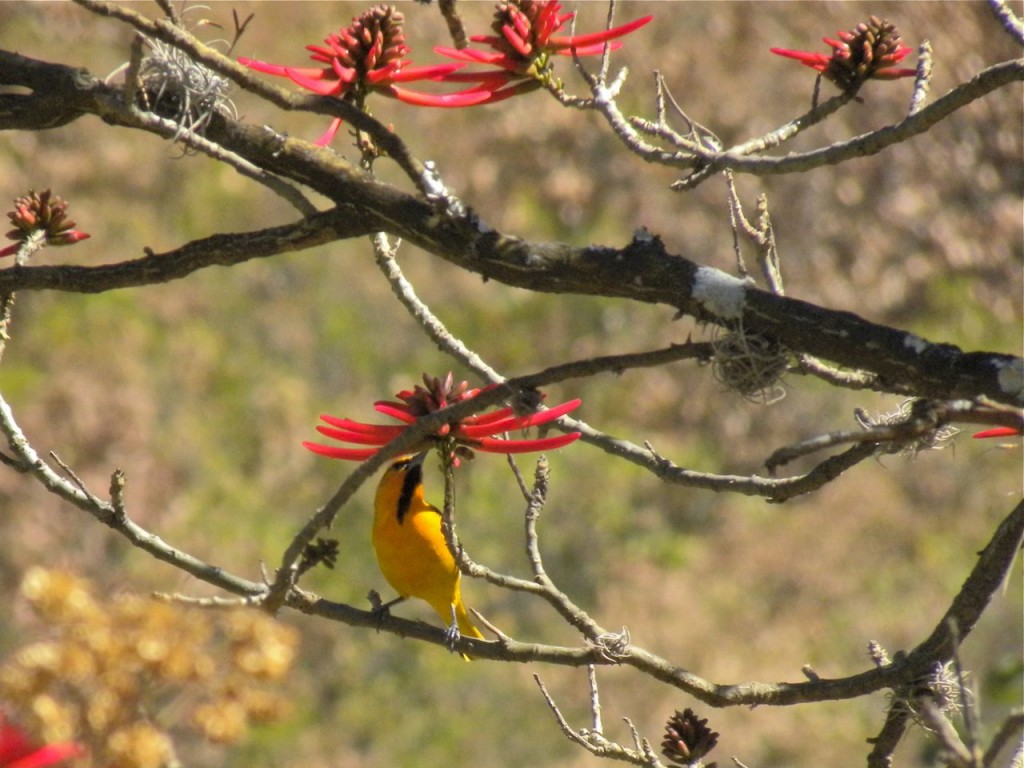
But the best of the day was a slightly different type of flycatcher and to set the stage here’s a few words about flycatchers in general. We lump most of our familiar flycatchers, a whole load of similar insectivorous birds, into the ‘tyrant flycatcher’ category. Perhaps the most confusing of these are about a dozen in the genus Empidonax, which in Ontario includes the Least, Willow and Alder Flycatchers, all pretty much lookalikes. Then there’s the Phoebes, the brilliant Vermilion Flycatcher (see 2 or 3 postings back) and the big, upright genus Myiarchus, which includes our familiar Great-crested Flycatcher. The kingbirds are another group and I’ve enjoyed getting acquainted with both the Tropical and Cassin’s Kingbirds; and the wonderful Great Kiskadee is in this mega-group too.
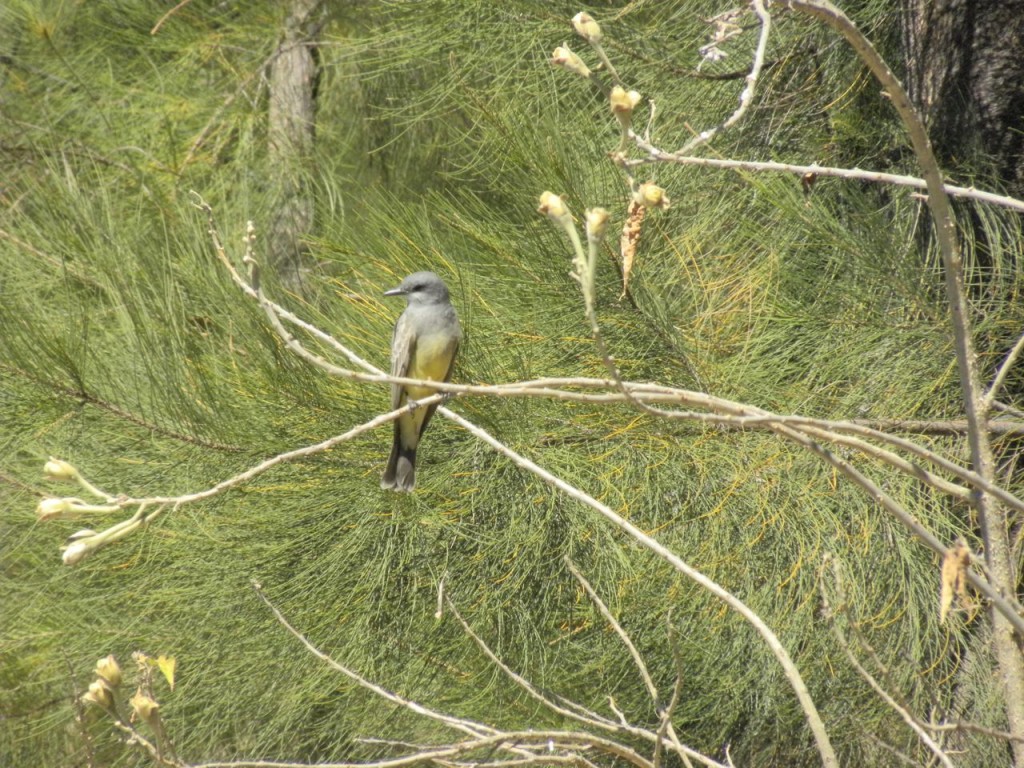
What all of this has to do with my Bird of the Day is only that I’ve encountered a couple of really breathtaking flycatchers in the past few days: an extremely elegant ‘kingbird’ the Scissor-tailed Flycatcher which has two long streaming forks to its tail; in flight it looks like an errant wind-borne ribbon. And today’s Bird of the Day is actually not part of the tyrant group at all and is more closely related to the Cedar Waxwing, it was a Grey Silky Flycatcher. It looks a bit like a tall and long-tailed Tufted Titmouse, oyster-grey with light peach belly and head and, best of all, its feathers lie seamlessly smooth just like that of a waxwing. I was unable to get a photograph of it but never mind there’s plenty in Google Images.
